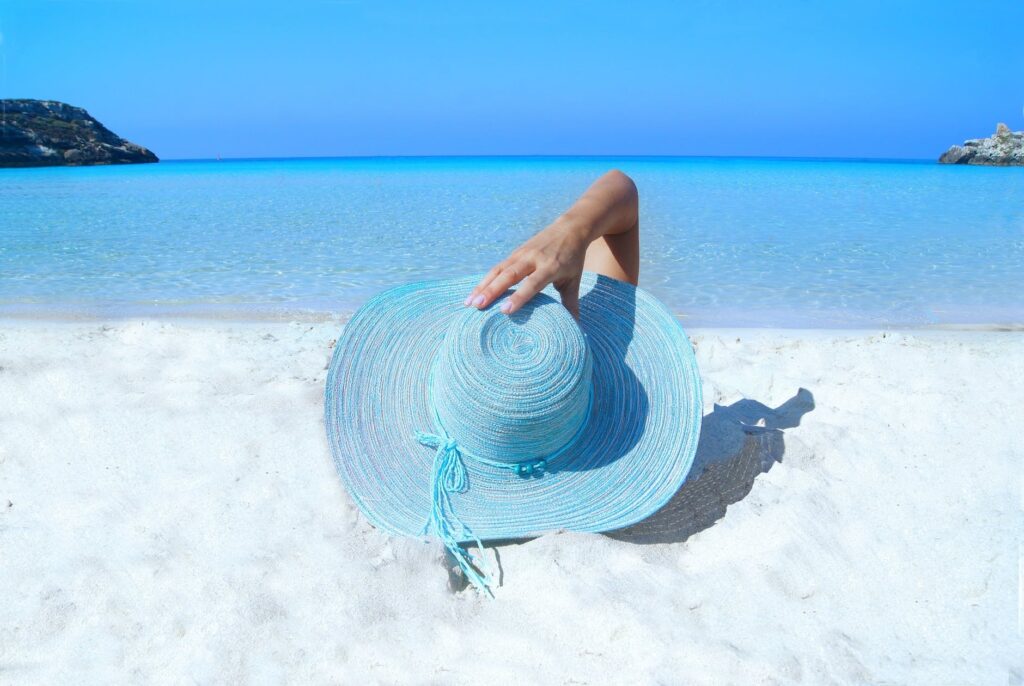
Sun Protection
Sun Protection
Summer is officially here! Summer is the perfect opportunity to spend time outdoors. Between taking beach vacations, swimming, and working in the lawn and garden…we are soaking up all the sun rays! While this seems enjoyable, it can also be harmful. Protecting ourselves while we are lounging poolside, walking the dog outside, or even sitting beside a window at work is so important! Let’s explore simple, effective ways to protect ourselves from the harmful rays of the sun…but also enjoy the summer!
What about the sun is damaging?
The sun emits a natural energy called ultraviolet (UV) rays. There are two kinds of UV rays, A and B. UVA is associated with skin aging and UVB is associated with skin burning. While these two forms are different, they both are harmful. Protection from these harmful rays will decrease the chance of skin cancer and premature aging.
Fun facts about UVA:
- Cause tans AND burns
- Proven to contribute to skin cancer
- Penetrates skin deeper than UVB
- The main light used in tanning beds
- Can penetrate through windows and heavy clouds
- Ever get burnt on an overcast day? Thank you UVA!
Fun facts about UVB:
- Penetrates the outermost layers of skin
- Fluctuates intensity as the day passes and then as the seasons change
- Cannot penetrate through glass
Who needs protected from the sun?
EVERYONE! It is recommended that people ages 6 months and older should use sunscreen every single day. Babies under 6 months have very sensitive and fragile skin. While sunscreen may not be recommended for babies, lots of shade and protective clothing is!
Sunscreen
According to The Skin Cancer Foundation, if spending the day mostly indoors the best sunscreen is a broad spectrum with an SPF of 15 or higher. If spending the day outdoors, broad spectrum SPF 30 or higher with water resistance is best. What is SPF? SPF stands for Sun Protection Factor. This is the amount of time it would take to redden the skin compared to using no protection at all.
What to look for when choosing a sunscreen:
- Broad spectrum – protects from both UVA and UVB rays
- SPF 15 – ideal for everyday use with occasional exposure
- SPF 30 or higher – ideal for outdoor activities
- Water resistant – ideal for exercise and swimming
- NO sunscreen is waterproof. It WILL wash off. Water resistant sunscreen is tested to be effective for 40 minutes.
- If skin sensitivities are present – look for a mineral or physical sunscreen as they scatter the rays instead of absorbing them
It is best to apply sunscreen to the entire body before dressing to ensure you are not missing any sections that may be exposed to the sun. Applying enough sunscreen is also very important. Experts recommend using one ounce (about two tablespoons) for the body and a nickel sized amount for the face. If using a spray, apply evenly until a shiny layer covers the skin.
All sunscreen needs to be reapplied! It is best to apply every 2 hours and immediately after swimming or sweating.
UV Protection in Clothing
Clothing is always a great option to protect the skin from those harmful UV rays. It is recommended to cover as much skin as possible. While you are probably thinking that you do not want to wear long pants and sleeves while in the sun, the clothing companies agree! Luckily, many sun protection-oriented clothing lines have developed lightweight, breathable, but protective material to help keep you covered and keep you cool. Many clothing materials, hats, and fabrics on umbrellas now have UPF incorporated. UPF stands for ultraviolet protection factor. This number indicates what fraction of the suns UV rays can penetrate through the fabric. For example, if a material is labeled UPF 30…it allows 1/30th of the UV radiation to reach your skin.
The use of hats and sunglasses are also encouraged by The Skin Cancer Foundation. Hats should be wide, about 3 inches or more, to ensure the eyes, ears, nose, and neck are protected. Some hats now include UPF, even better! Sunglasses that are labeled UV-blocking is also very important.
Tanning beds
No tan or burn is safe. A “base tan” has never been proven safe or effective in reducing harmful exposure to the sun. While at one point tanning beds were though to be safe, it has quickly been proven that they are not. Research has found that using a tanning bed before the age of 35 increases your risk of melanoma by 75%! The best approach, stay away from tanning beds.
From the team at Miller Sports & Family Chiropractic
As health care providers, we care about every aspect of your health! We recommend visiting your dermatologist yearly for a full body evaluation of your skin, moles, and freckles. As 1 in 5 Americans will develop skin cancer, we want to encourage early detection and ultimate protection. Hang out in the shade, wear sunscreen every day, and enjoy this beautiful weather….safely!
